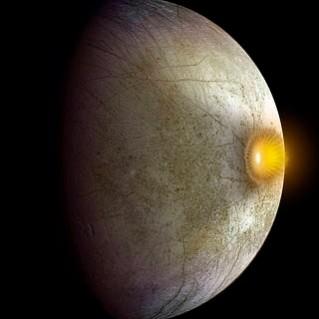
In a first, an international team has found sugars essential to life in meteorites -- supporting the hypothesis that chemical reactions in asteroids can make some of life's ingredients.
If correct, meteorite bombardment on ancient Earth may have assisted the origin of life with a supply of life's building blocks, NASA said in a statement late Tuesday.
"Other important building blocks of life have been found in meteorites previously, including amino acids (components of proteins) and nucleobases (components of DNA and RNA), but sugars have been a missing piece among the major building blocks of life," said Yoshihiro Furukawa of Tohoku University, Japan, lead author of the study published in the Proceedings of the National Academy of Sciences.
The research provides the first direct evidence of ribose in space and the delivery of the sugar to Earth.

"The extraterrestrial sugar might have contributed to the formation of RNA on the prebiotic Earth which possibly led to the origin of life," Furukawa added.
The team discovered ribose and other bio-essential sugars including arabinose and xylose in two different meteorites that are rich in carbon -- NWA 801 and Murchison.
Ribose is a crucial component of RNA (ribonucleic acid). In much of modern life, RNA serves as a messenger molecule, copying genetic instructions from the DNA molecule and delivering them to molecular factories within the cell called ribosomes that read the RNA to build specific proteins needed to carry out life processes.
"It is remarkable that a molecule as fragile as ribose could be detected in such ancient material," said Jason Dworkin, a co-author of the study at NASA's Goddard Space Flight Center in Greenbelt, Maryland.
"These results will help guide our analyses of pristine samples from primitive asteroids Ryugu and Bennu, to be returned by the Japan Aerospace Exploration Agency's Hayabusa2 and NASA's OSIRIS-REx spacecraft," he noted.
Since its arrival in December 2018, the OSIRIS-REx spacecraft has mapped the entire Bennu asteroid in order to identify the safest and most accessible spots for the spacecraft to collect a sample.
NASA has chosen four potential sites for its OSIRIS-REx spacecraft to fetch a sample of the asteroid Bennu. The goal is to collect a sample of Bennu in mid-2020, and return it to Earth in late 2023.
The new work gives some evidence to support the possibility that RNA coordinated the machinery of life before DNA.
"The sugar in DNA was not detected in any of the meteorites analyzed in this study," said Danny Glavin, a co-author of the study at NASA Goddard.
"This is important since there could have been a delivery bias of extraterrestrial ribose to the early Earth which is consistent with the hypothesis that RNA evolved first."
The team discovered the sugars by analyzing powdered samples of the meteorites using gas chromatography mass spectrometry, which sorts and identifies molecules by their mass and electric charge.
Since Earth is awash with life, the team had to consider the possibility that the sugars in the meteorites simply came from contamination by terrestrial life.
The team plans to analyze more meteorites to get a better idea of the abundance of the extraterrestrial sugars.

















